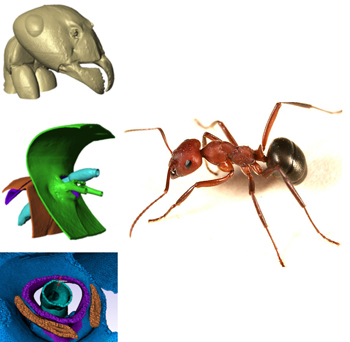
Despite having very tiny bodies, ants are able to carry loads up to 5,000 times their own body weight. But how do they manage this?
Research and experiments have revealed a biomechanical secret behind this amazing strength of ants. The joint in ants’ necks was observed to possess a complex and highly integrated mechanical system. Research showed that the joints in the neck were the main factor in ants’ abilities to lift many times their own body weights.
Engineers from Ohio State University constructed three-dimensional models of this lifeform’s internal and external anatomy in order to better understand the strength of the ant neck and its upper limits. This made it possible to examine the mechanical functions, structural design and material qualities of the ant species Formica exsectoides.
As the picture below shows, a single joint, consisting of soft tissue, joins the hard exoskeleton in the ant’s head and thorax chest regions. When carrying food or some other object, the ant bears the entire weight on its neck joint. The ant can apply the greatest strength when this joint in the ant’s neck is straight. Carlos Castro, assistant professor of mechanical and aerospace engineering at Ohio State says, “Loads are lifted with the mouthparts, transferred through the neck joint to the thorax, and distributed over six legs and tarsi that anchor to the supporting surface."

Experts think that great progress can be made someday in developing ultra-light robot technology and that devices of use to man can be built by using this immaculate property bestowed on ants by God. The way that a tiny ant is able to bear many times its own body weight is proof that ants, like all other living things, are under the control of God, the Creator of the world, at all times.
“…There is no creature He does not hold by the forelock. My Lord is on a Straight Path.” (Surah Hud, 56)
Adnan Oktar's piece on Hiba Magazine :


